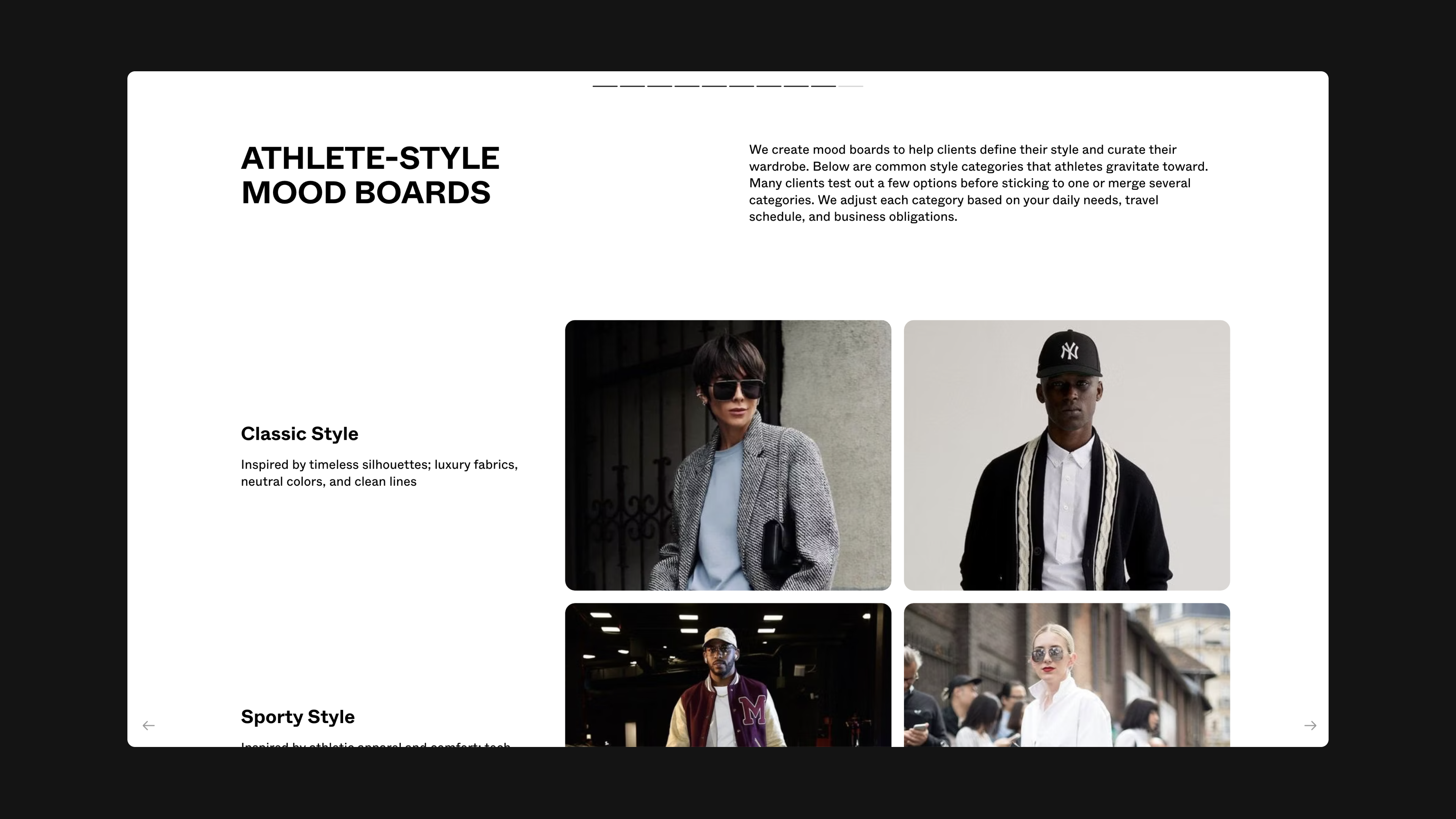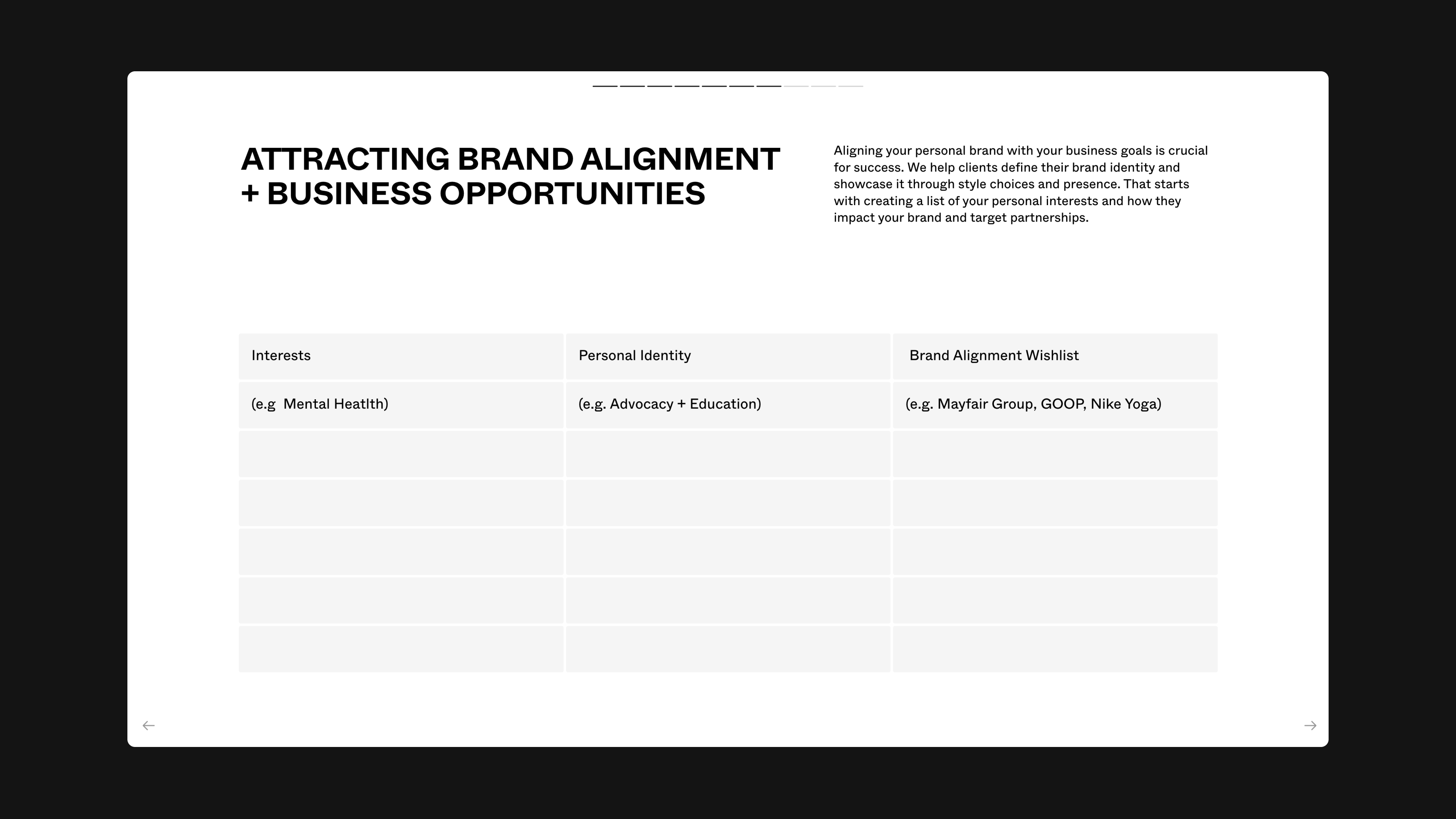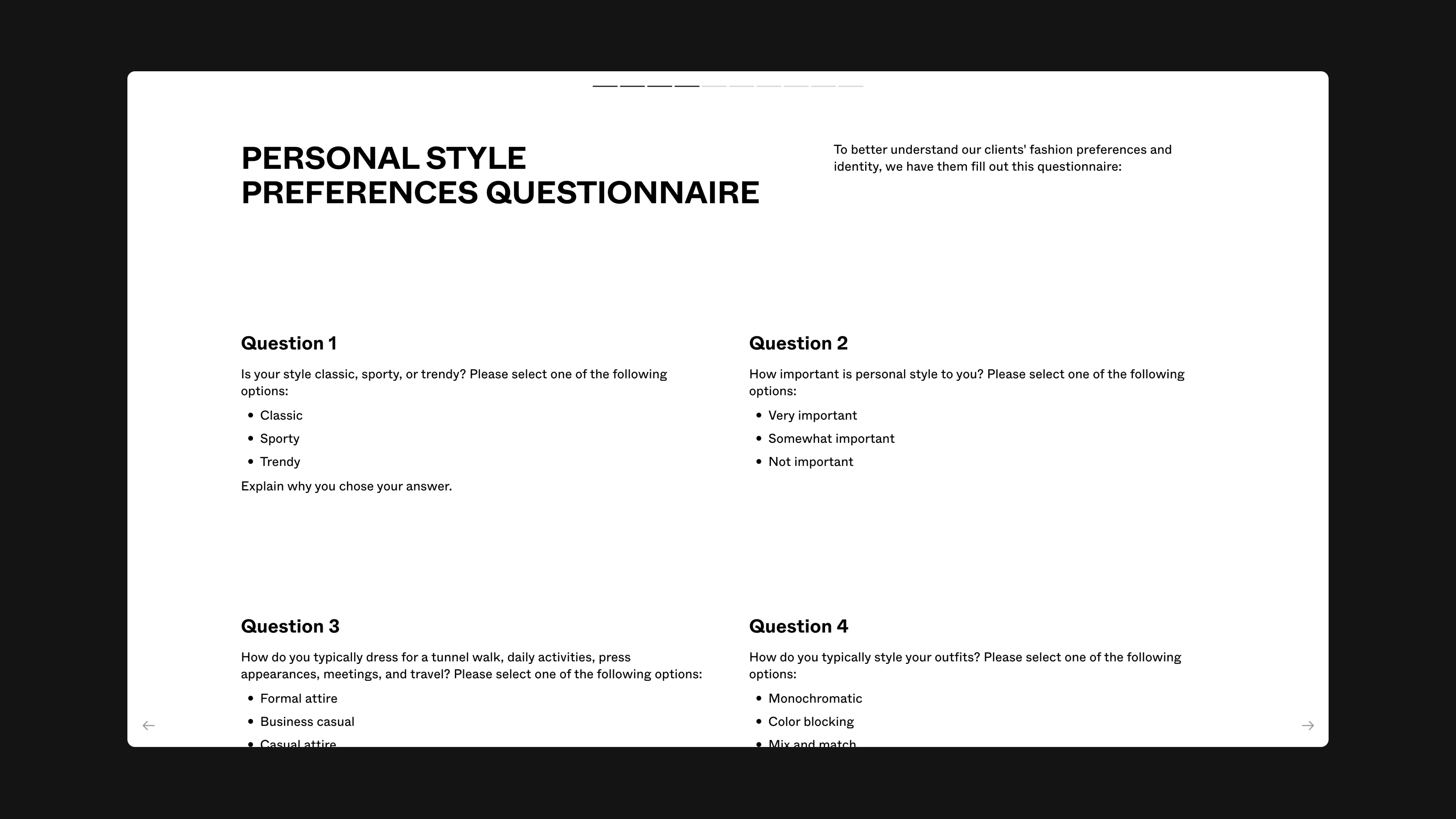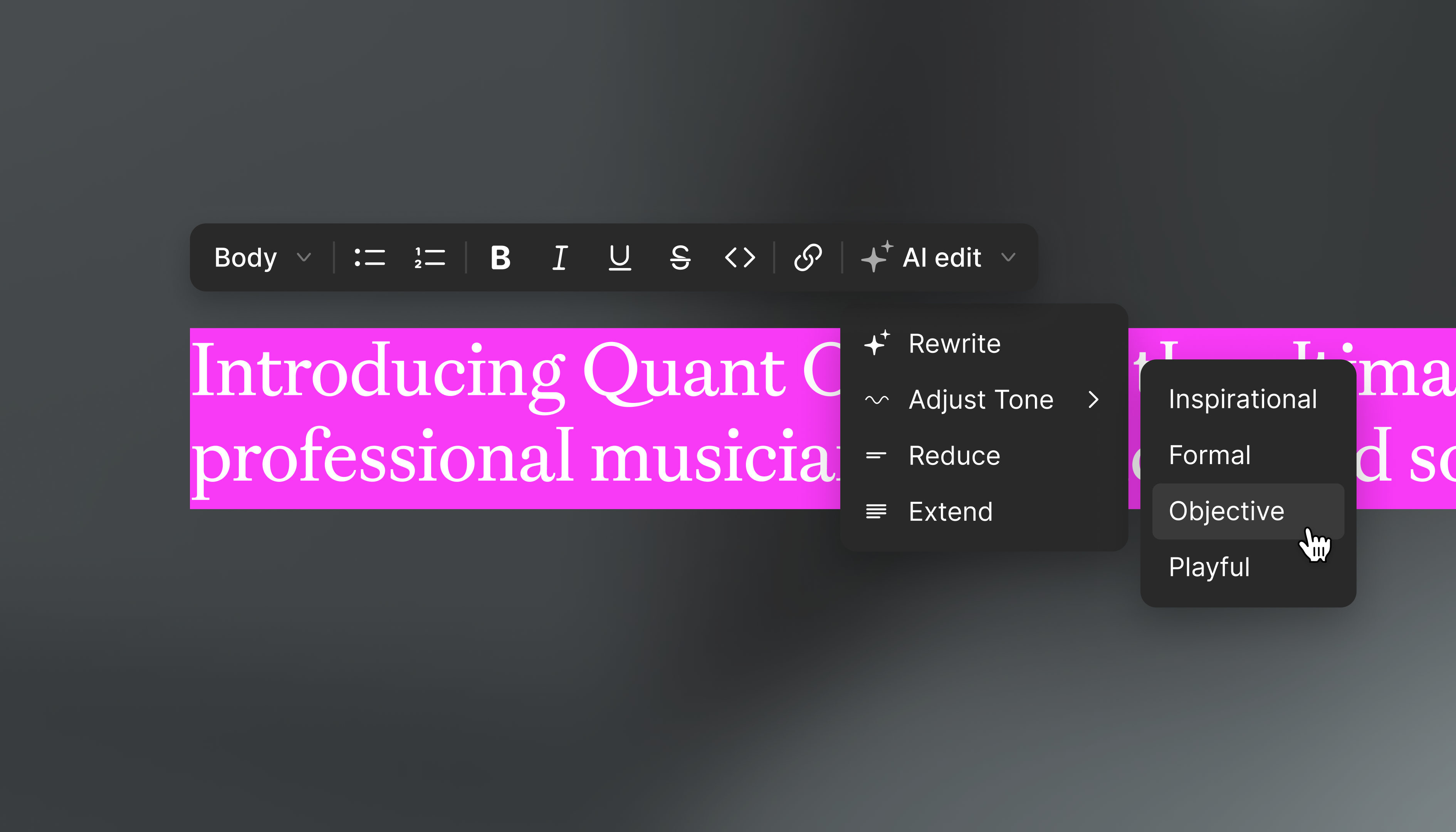Tips of the trade
How to Create a Capabilities Deck
Show potential clients and partners who you are and what you can do

Have you ever heard from prospective clients who seem clueless about what you do? Perhaps you paint portraits, but people ask you to paint their houses. Or maybe you write blog posts but get questions about handling social media.
When your business offerings are unclear, you waste lots of time fielding off-base queries. Worse, you might accept a gig only to discover that you and the client are not on the same page. Or you might fail to reach customers that could be a great fit.
A capabilities deck helps prevent this by highlighting exactly what sets you apart and which services you provide—and which you don’t.

What is a capabilities deck?
A capabilities deck is a document or presentation that businesses use to explain what makes them unique and attract clients. The best capabilities decks introduce your brand, values, and offerings. They showcase your background and make a case for why clients would want to work with you.
A robust capabilities deck can help you secure new opportunities and manage expectations while promoting your business. Marketing and creative agencies often employ these decks, but any client-facing business would benefit from using them. Some entrepreneurs use a general capabilities deck for all clients, but many tailor decks to a specific audience. Either way, it’s worth putting the time in to get this critical resource right.
What should a capabilities deck include?
Your capabilities deck will vary based on your industry and target audience, but most include these core elements:
- Mission and values. Define the core goals and principles that guide your work.
- Clientele. Identify the target market that you primarily serve.
- Background. Share your bio and, if relevant, an overview of your company’s history.
- Services. Be specific about what you offer to clients.
- Workflow. Help potential clients understand your working process.
- Past work. Include case studies, testimonials, or a portfolio to highlight successful projects.
- Next steps. Let clients know what service packages you offer (including pricing is optional), and clarify what they should do if they’re interested (e.g., set up a free consultation).
- Contact info. Share your website, email, phone number, and social media handles so people can get in touch.
Tips for creating a capabilities deck that wins clients
Courtney Mays, founder and principal stylist at The Parker Mays Collective, helps clients—mainly athletes—define their personal style and amplify their impact. She uses a capabilities deck to convey her unique approach. “It’s important that consumers know exactly what services you’re providing,” she said. “I want to support people using fashion as a platform, not help them get that sneaker that five people have.”

Here are some of Mays’ tips for how to make a capabilities deck:
- Include effective visuals. Text only goes so far. For most entrepreneurs — especially in creative fields—including photos, videos, and other imagery is crucial to getting their message across. In her capabilities deck, Mays includes mood boards, a portfolio of past clients, and headshots showcasing her own style. “I work in a visual space, so a visual document makes it much easier to have conversations with new and existing clients,” she said.
- Stay consistent. All aspects of your capabilities deck should reflect your brand identity, including format, colors, and tone. “My business card and website are both white with black writing, and it was important that my capabilities deck feel like part of a total package,” Mays said.
- Add a unique touch. Including a surprising element in your deck can help you stand out. For Mays, that meant sharing a copy of a personal style questionnaire as an icebreaker.
“Creating a capabilities deck with Tome opens the door to having a conversation with potential clients, and I can get a window into what they’re thinking.”


Common mistakes to avoid when creating a capabilities deck
- Being too vague. Be as clear as possible when explaining your services and how you stand out from competitors. And dig deep in exploring your mission and values. “It’s easy to talk about creative jobs in an evasive way,” Mays said. “It’s important to be specific and tell your story in a way that feels authentic.
- Sharing generic decks. Unlike static websites, decks can be bespoke. While you can have a common starting point, it’s key to customize presentations based on your target audience. “I want to make sure I’m creating a deck that’s specific to my audience in order to reach them better,” Mays said. For her, that might mean spending more time on sustainability in one deck or on gender-neutral clothing in another.
- Too much or too little information. Visuals are important, but they’re not enough. “Pictures can give an illusion of what we do, and you need to remember to explain yourself,” Mays said. Yet too much text can be overwhelming—striking a balance is key.

What makes a capabilities deck stand out
Embed web pages
When your capabilities deck is peppered with links, clients can easily get distracted with multiple tabs or ignore the content altogether. With Tome, you can embed scrollable web pages or other media — such as videos or GIFs — directly into the presentation. “I’m obsessed with the embedding tool — it’s magical,” said Mays, who embeds clips of media coverage and visual references for clients. “It has changed the way I communicate with clients.”
Get a boost from AI
Tome’s AI features can save you hours by helping you source images and refine text. Mays was surprised by how quickly she found useful visuals by typing in a phrase like “beautiful aesthetic basketball court” and how the tools helped take her writing to the next level. “I was a little prideful because I enjoy writing, but I realized the AI technology actually helped inspire my thoughts.”
Gather multiple perspectives
Most creatives operate collaboratively. Tome makes it easy to work with your team or external partners in a single document to make the deck the best it can be. “I love that it’s so collaborative, with multiple people working in the same, easy-to-use interface,” Mays said. “And being able to share with one click is extremely valuable.”

Create a capabilities deck with Tome
Tome makes it easy to create a modern, professional capabilities deck. Start with a pitch deck or capabilities deck template you can customize to fit your business.
Embed GIFs, videos, and web pages right in the presentation, and use Tome’s generative AI capabilities to source images and polish your prose. Once you’re done, you can easily collaborate with others, update the deck, and share a link with new clients.
You may also like...

Three popular ways to use AI in sales training, including materials creation, role-playing, and personalized coaching.

In the dynamic world of B2B sales, generating quality leads is crucial for business growth and sustainability. The ability to attract and convert potential clients into loyal customers can significantly impact a company's revenue and market presence. This is where advanced tools like Tome come into play. Tome, an AI-driven sales tool, is revolutionizing how businesses approach lead generation, making the process more efficient and effective. In this article, we'll delve into the importance of B2B lead generation, explore strategies to enhance lead volume, and see how Tome can be integrated into your sales strategy to yield impressive results. Why B2B Lead Generation is Important B2B lead generation is the lifeblood of any thriving business. It is the process of identifying and attracting potential customers who have a genuine interest in your product or service. For sales leaders, this process is crucial not just for driving revenue but also for ensuring a steady stream of business opportunities. Without a consistent influx of leads, a company risks stagnation and potential decline in its competitive edge. Understanding MQLs and SQLs Marketing Qualified Leads (MQLs) and Sales Qualified Leads (SQLs) are critical concepts in lead generation. MQLs are leads that have shown interest in your marketing efforts, such as downloading a whitepaper or attending a webinar. They are considered more likely to become customers compared to other leads. SQLs, on the other hand, are leads that have been vetted by the sales team and are deemed ready for direct sales engagement. For sales leaders, understanding the distinction between MQLs and SQLs is crucial for tailoring the right approach at each stage of the buyer’s journey. MQLs are nurtured through targeted marketing efforts until they exhibit behaviors that qualify them as SQLs. This transition from MQL to SQL is a critical step as it marks the lead’s readiness for a sales pitch. Lead scoring, nurturing, and qualification are integral to this process. By assigning values to leads based on their engagement levels and behaviors, and providing relevant content to build interest and trust, sales leaders can ensure that only the most promising leads are passed to the sales team. Steps to Improve Lead Generation Volume Improving lead generation volume is a strategic process that requires a multi-faceted approach. Here are the essential steps for sales leaders to enhance their lead generation efforts: Identify Your Target Audience Understand who your ideal customers are and what they need. Use demographic data, customer personas, and market research to pinpoint your audience. Focus your marketing efforts on attracting the right prospects. Leverage Content Marketing Create valuable and relevant content that addresses your audience’s pain points and interests. Develop blog posts, whitepapers, case studies, and videos. Position your company as an industry authority with high-quality content. Optimize for SEO Ensure your website and content are optimized for relevant keywords. Improve website loading times and user experience. Increase your visibility on search engines to attract organic traffic. Engage on Social Media Share your content and participate in industry discussions. Use targeted ads to reach a broader audience. Directly interact with prospects to build relationships and trust. Implement Email Marketing Build a quality email list and send personalized, relevant content to subscribers. Use automation to nurture leads through drip campaigns. Track engagement and refine your approach to ensure timely and relevant messaging. Leveraging AI in B2B Lead Generation Artificial Intelligence (AI) offers numerous benefits for B2B lead generation. For sales leaders, AI can analyze vast amounts of data quickly, identify patterns, and predict behaviors. This allows businesses to make informed decisions and tailor their marketing efforts more precisely. AI-driven tools can automate repetitive tasks, freeing up time for your sales team to focus on high-value activities. There are several AI tools available that can enhance your lead generation efforts. These tools can automate tasks, provide insights, and streamline processes. Examples include AI-driven chatbots, predictive analytics platforms, and customer relationship management (CRM) systems. These tools can help you identify high-quality leads, predict their behaviors, and automate follow-up actions, increasing the efficiency of your lead generation efforts. Tome stands out as an AI-driven sales tool designed to optimize lead generation and management. Tome uses advanced algorithms to identify high-quality leads, predict their behaviors, and automate follow-up actions. This not only saves time but also increases the efficiency of your lead generation efforts. By integrating Tome into your lead generation strategy, you can leverage its advanced features to enhance your lead generation process. Integrating Tome into Your Lead Generation Strategy With Tome, your lead generation strategy becomes smarter and more targeted thanks to advanced AI technology. By leveraging cutting-edge algorithms, Tome is able to prioritize leads based on fit and intent with remarkable accuracy. This ensures that your team spends their valuable time and resources on the prospects most likely to convert, ultimately improving your overall conversion rates. The AI technology behind Tome also goes beyond lead prioritization, guiding your outreach efforts with personalized messaging suggestions that align perfectly with each prospect’s unique needs and challenges. Through sophisticated analysis of customer data and behavior, the AI capabilities of Tome provide invaluable insights into the most effective outreach strategies, helping your team to craft compelling and relevant messages that marry your value prop to the initiatives your buyers care about. By integrating Tome, you're not just enhancing your research and lead generation processes; you're empowering your team with a powerful assistant that makes every step of the process more strategic and impactful, thanks to the advanced AI technology at its core. Measuring Lead Generation Success Measuring the success of your lead generation efforts is essential for continuous improvement. Key metrics to track include lead conversion rate, cost per lead, lead quality score, customer acquisition cost, and return on investment (ROI). By tracking these metrics, sales leaders can gain insights into the effectiveness of their lead generation strategies and identify areas for improvement. Use tools like Google Analytics, CRM systems, and AI-driven analytics platforms to track and analyze your lead generation metrics. Regularly review your data to identify trends, areas for improvement, and successful strategies. Lead generation is an ongoing process that requires continuous refinement. Use the insights gained from your metrics to make data-driven decisions and adjust your strategies. Experiment with new approaches, learn from your successes and failures, and stay updated with industry trends. Try Tome Today In the ever-evolving landscape of B2B sales, effective lead generation is paramount for business success. By understanding the importance of lead generation, leveraging AI tools like Tome, and continuously optimizing your strategies, you can unlock the full potential of your sales efforts. Tome’s advanced features and capabilities make it an invaluable asset for any business looking to enhance their lead generation process. Embrace the power of AI, and watch your business grow.